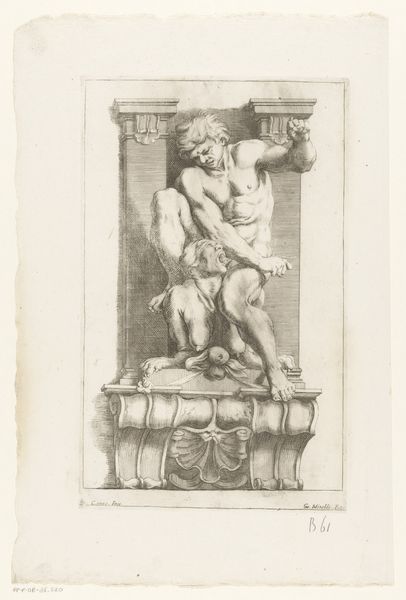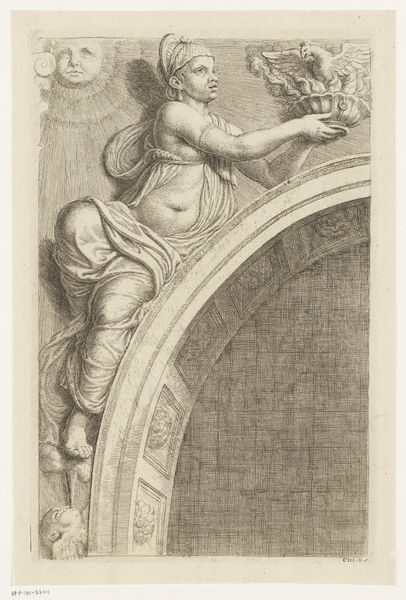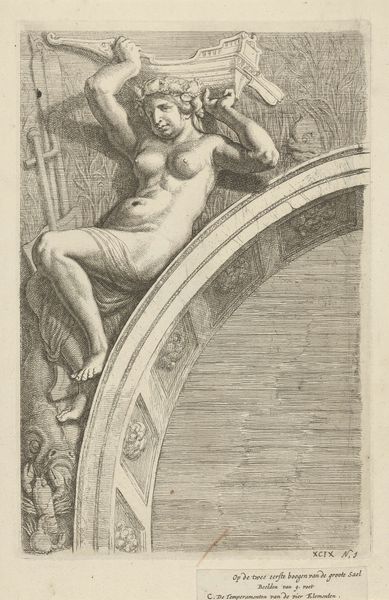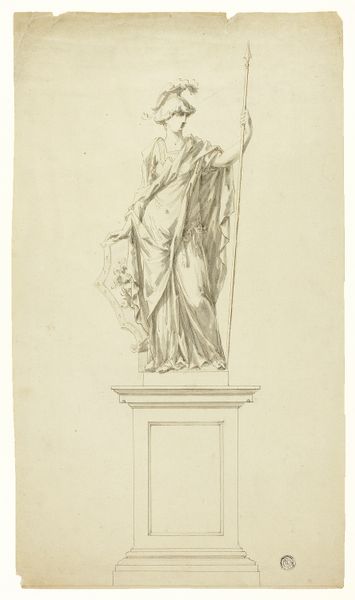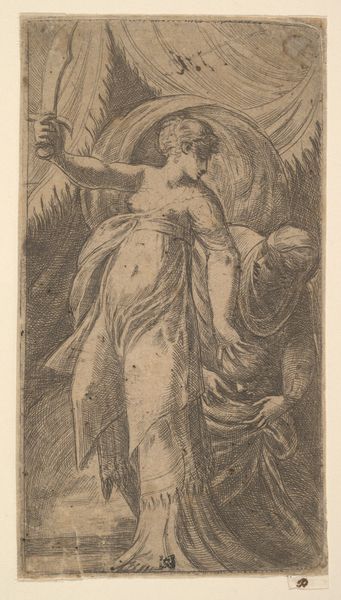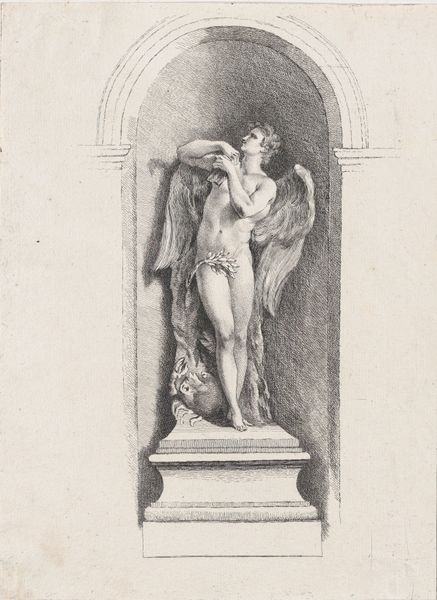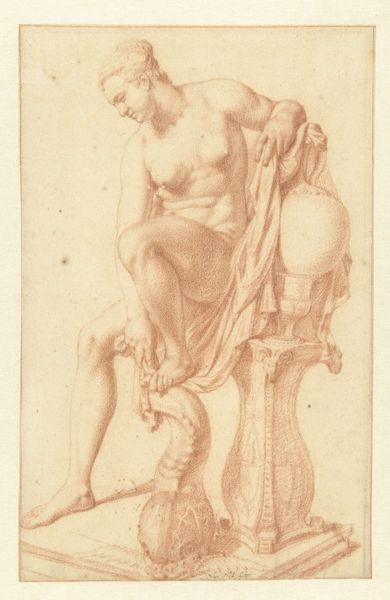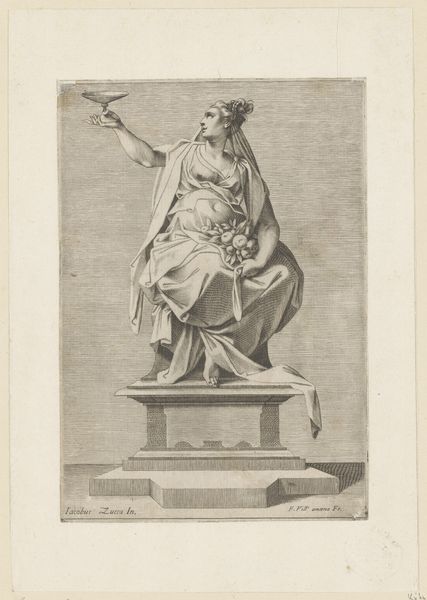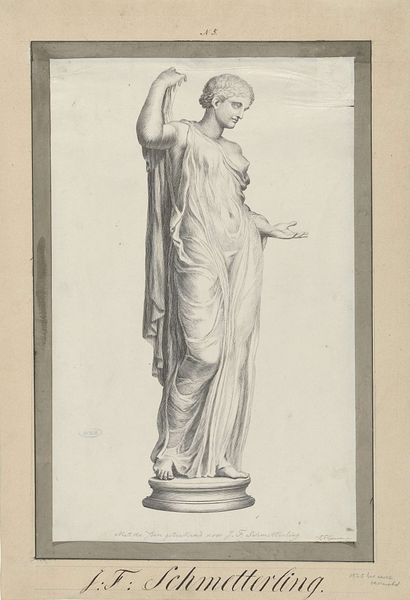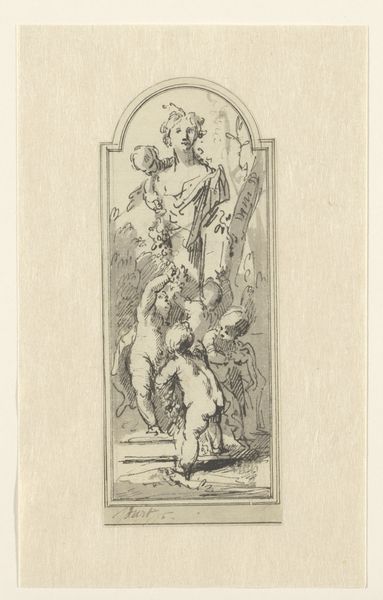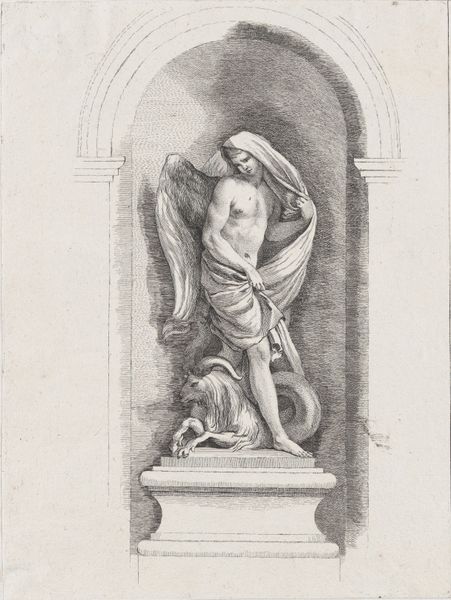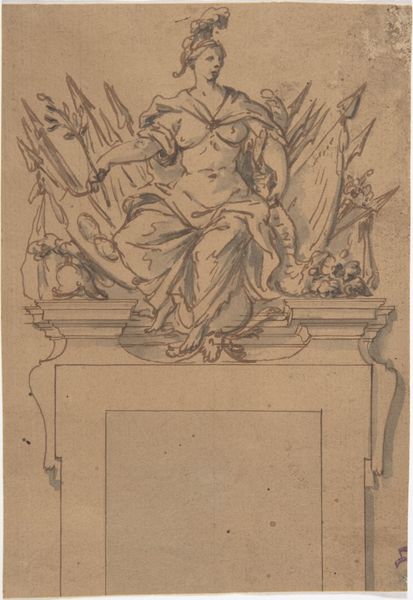
Reliëf met personificatie van het element Lucht boven boog aan westzijde van de Burgerzaal in het Stadhuis op de Dam 1663
0:00
0:00
print, etching, engraving
#
aged paper
#
toned paper
#
allegory
#
baroque
#
ink paper printed
# print
#
etching
#
old engraving style
#
white palette
#
nude
#
engraving
Dimensions: height 322 mm, width 214 mm
Copyright: Rijks Museum: Open Domain
Editor: This etching by Hubert Quellinus from 1663, titled "Relief with personification of the element Air..." feels so ethereal, almost like a fleeting dream captured in ink. The figure emerging from the archway—what are your initial thoughts? Curator: It’s compelling to consider the material conditions that gave rise to this "dream." Quellinus wasn't just pulling an image from thin air, no pun intended. He was participating in a larger project, the Amsterdam City Hall, now the Royal Palace. How does viewing it as a reproductive print, an *etching*, alter your understanding of its purpose? Editor: It definitely changes things. Thinking about it as part of the City Hall, and the process of reproducing it as an etching makes me think about how it becomes less about pure artistry and more about craft and accessibility. But what about the subject? The allegorical nude feels so disconnected from everyday life. Curator: Disconnected, or aspirational? Consider the materials themselves: the ink, the paper, the press. These are tools of dissemination. Quellinus is translating a monumental sculpture into a format accessible to a wider audience. The print allows people removed from the immediate spectacle of the City Hall to consume, dissect, and reproduce its intended civic values. The labor is in both the creation and the dispersal. Editor: So it’s not just about showing the ideal but also making it available. What strikes me is how different the role of ‘artist’ would have been then, versus what we imagine now. Curator: Exactly. The "artist" wasn't necessarily a solitary genius. Quellinus, in creating this etching, was participating in a collaborative process of knowledge production and ideological shaping, reinforcing the symbolic order. And let's not forget the social status inherent in owning and displaying such a print. Editor: That makes a lot of sense. Seeing it as part of this larger network of production and consumption makes me see it as something other than just an artwork. Thanks for sharing that! Curator: My pleasure! Thinking through materiality reveals the broader context and implications of even the most seemingly ‘high art’ images.
Comments
No comments
Be the first to comment and join the conversation on the ultimate creative platform.
